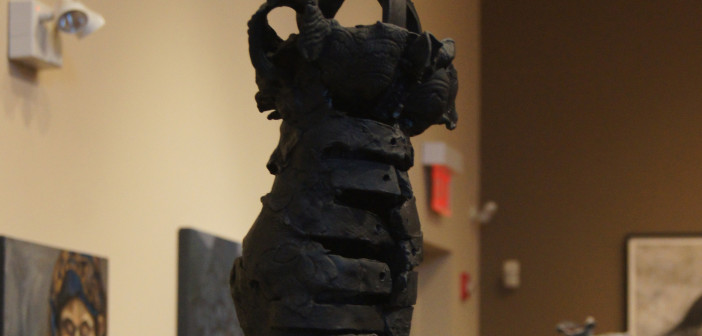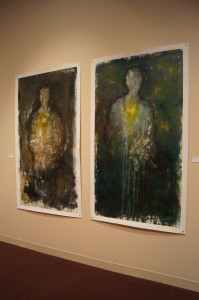Walking out of a belly dancing class several years ago, Cheryl Jefferson, executive producer and founder of Breaking Criminal Traditions, picked up a copy of Elle Magazine and learned something that would change her life and the way she looked at certain cultural traditions forever.
Jefferson discovered that if she had been in Egypt performing the same dances would have most likely been molested or harmed in some way for doing so.
“I was very moved,” Jefferson explains. “I began to research. I read everything I could get my hands on.”
In the end, Jefferson created Breaking Criminal Traditions, an organization that aims to bring awareness to such criminal traditions that occur around the world, including honor killing, forced child marriage, acid violence and stoning, among other things. With this organization, Jefferson hopes to shed light on the severity of these traditions in an engaging and beautiful way: through art.
With this, Jefferson started “The Art of Influence: Breaking Criminal Traditions” exhibit, which can currently be seen in Schoenherr Gallery at Wentz Hall until April 6.
Featuring artists from around the country, this exhibit portrays these criminal traditions, or, as Jefferson describes them, “ancient, ongoing rituals that kill or maim millions each year, yet are rarely considered crimes.”
One such tradition, bride burning, is exhibited by Corinna Button’s 3D mixed media piece “Between you and Me V,” which depicts a charred and bloodied gown with no body.
Bride burning occurs mostly in India, Pakistan and some eastern Asian countries. Currently legal in India, where an estimated several thousand women die of it each year, a husband may decide to burn his bride alive when he either is unhappy with her and what he believes she offers him, or when he wishes to obtain her wealth.
Another criminal tradition that is shown in Paula Kloczkowski Luberda’s “Anticipation” is stoning. “Anticipation,” made of stoneware and wood, depicts a woman standing between two pillars, looking up in a tensed position as a large boulder is suspended above her head.
Perhaps an even more definitive depiction of stoning comes in Dominic Sansone’s “Holiday in Fallujah, 2008.” Reminiscent of a bowling alley lane, this piece consists of a long board with a stone bowling ball heading towards three human heads in place of bowling pins.
While this ritual is not exclusive to women, it is generally reserved for women who have committed adultery. These women are buried up to their chests while close family members and other members of the community throw stones at them until they die.
Another tradition shown throughout this exhibit is the practice of child soldiers.
Kathy Liao’s oil painting “Little Feet,” shows what appears to be large explosions and smoke among the dark sky and red ground of a battlefield. The title implies that the piece represents the estimated 700,000 child soldiers, both boys and girls, between the ages of eight and the early teenage years that are forced into the military every year, specifically in Africa, Burma and parts of Indonesia.
This piece can also represent a larger scope of people, however, as the Breaking Criminal Traditions website explains that some countries use not only children, but also “the elderly, and both the mentally and physically disabled as human mine sweepers.”
Another painting that might represent a few different traditions is Lorraine Sack’s “Figure with Magenta Background.” This oil painting shows an emotionless young woman turned away from the frame with an exposed back and a purple sheet wrapped around her bottom half.
One worldwide criminal tradition that this piece brings to mind is that of human trafficking. According to the U.S. State Department’s Trafficking in Persons Report, trafficking can be defined as “the recruitment, transportation, transfer, harboring or receipt of a human being against their will by means of threat, force, coercion, abduction, fraud and/or deception,” and it “always involves the abuse of power and the exchange of money for human beings.” As the world’s second fastest growing business with a profit, nearly 80 percent of those trafficked are female.
Trafficking can also be connected to many of the other criminal traditions, including forced child marriage, which “Figure with Magenta Background” also has a sense of.
An estimated 8 million to 10 million girls every year between the ages of 9-15 are forced into marriage to, typically, older men. In some cases, in famine-stricken areas, a mother will chose to sell her daughter into a marriage when she is not able to properly feed and care for the daughter.
“Maybe that was the girl who could have cured pancreatic cancer,” says Jefferson, reflecting on this concept. “But we’ll never know because she was married off at nine and forced to deal with her own problems… The amount of talent that is lost is staggering.”
“The biggest thing is feeling like you’re making a difference,” says Sydney Pacha, writer and producer for Breaking Criminal Traditions and North Central alumna. “It really makes you appreciate what you do have.”
This exhibit having previously been in Highland Park, Ill., and two Chicago locations, including Kent College of Law, where it all started for Jefferson in 2013 with her first TED Talk. It will make its next appearance at Bridgeport Art Center in Chicago. After this, Jefferson says that she has also received an invitation to bring the exhibit to Berlin, Germany.
Overall, Jefferson explains that this exhibit aims to increase support and understanding of other cultures and their traditional differences. “I’m hoping with Breaking Criminal Traditions that we can break that cultural gap.”
“It’s really just about hope and becoming a world community,” says Pacha.


